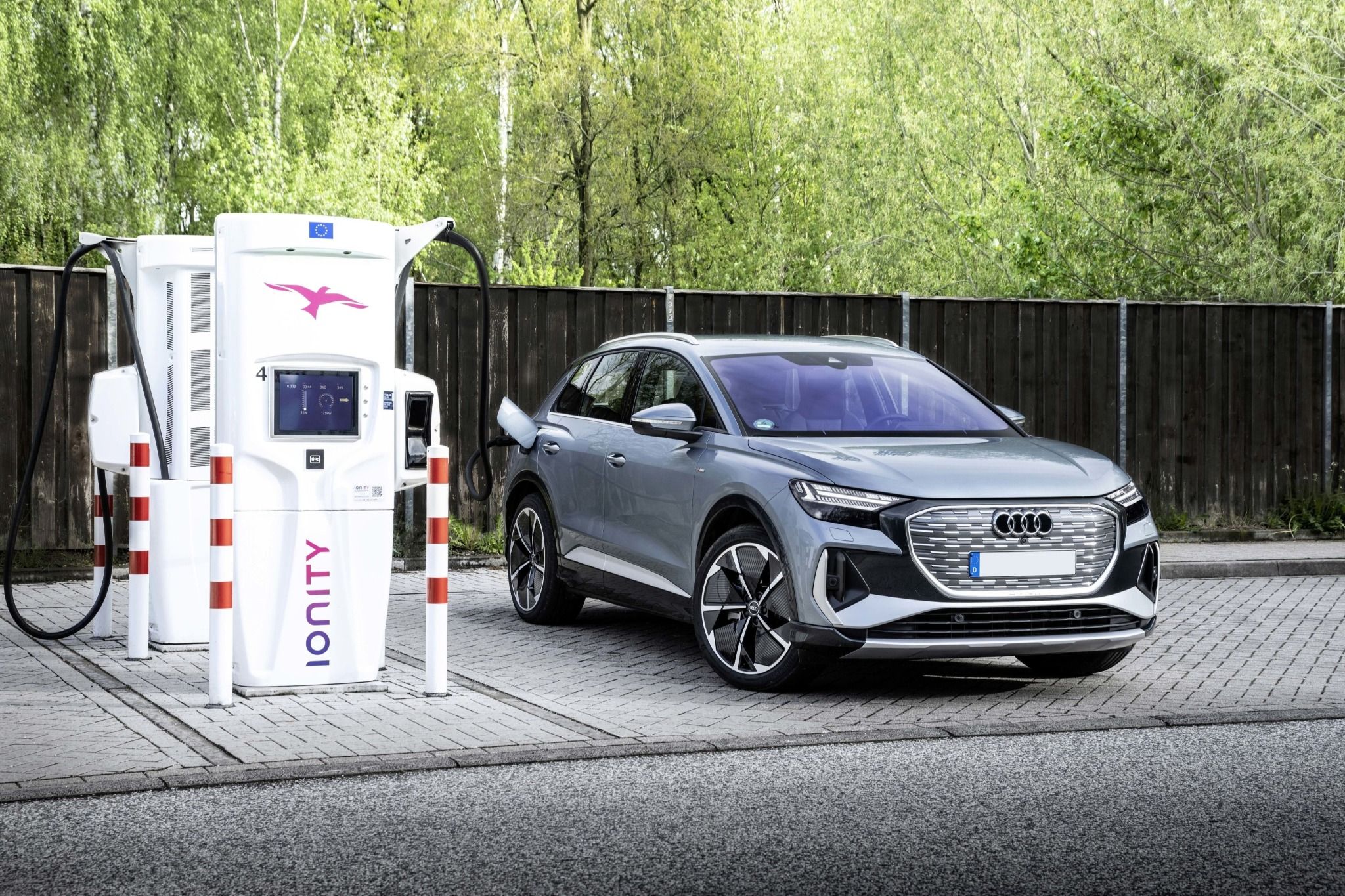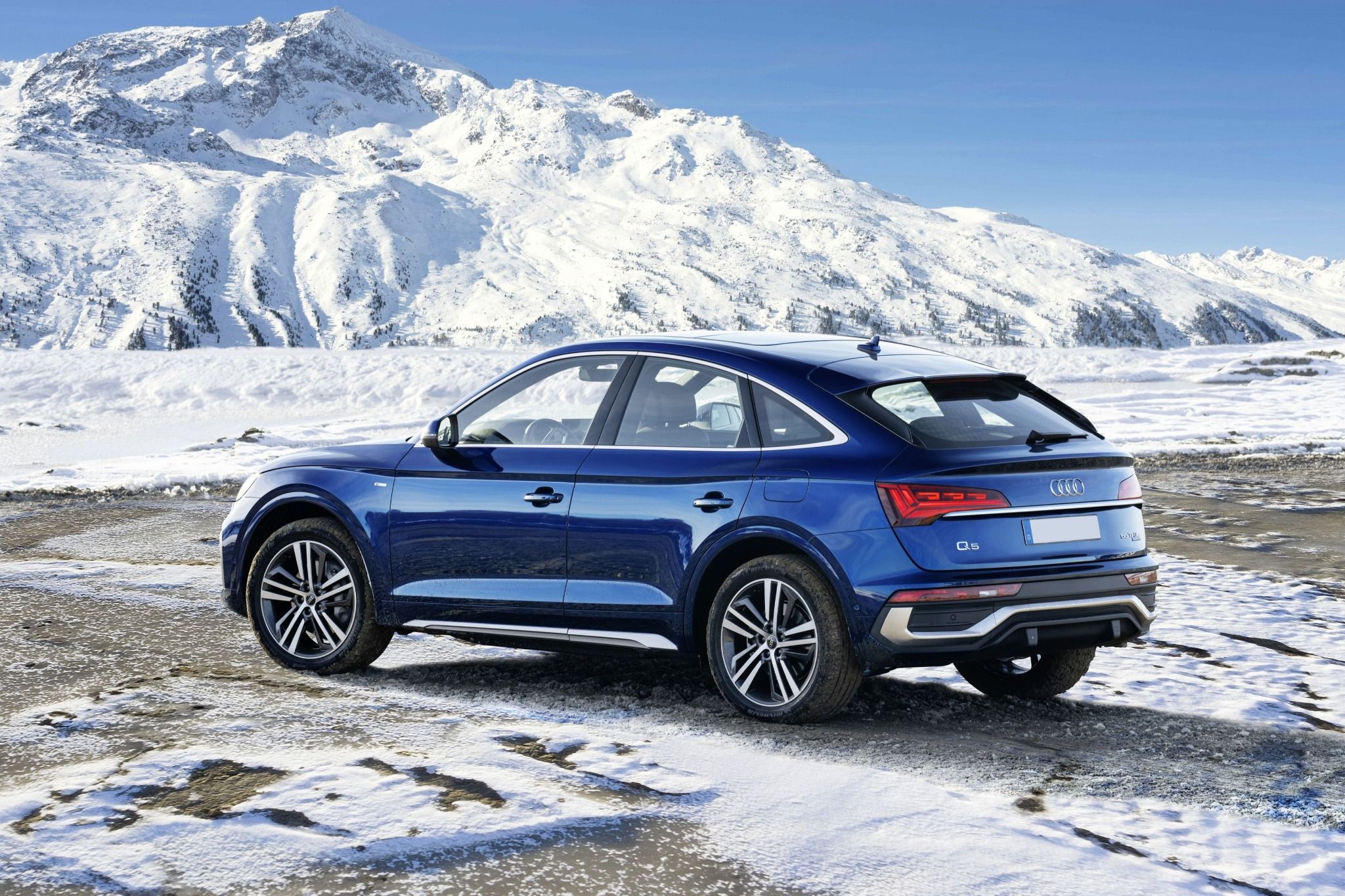Electrification is the car industry buzzword of the moment.
Battery-powered electric vehicles are becoming increasingly common on the roads, with many cars having hybrid options that see petrol engines paired with electric motors.
To differentiate between these models, Audi has introduced unique badging so that you know exactly what you’re getting from your electrified car. Here, we explain what the names mean, what the differences are and how to choose the right model for you.

What’s the difference between Audi e-tron and TFSI e?
Both these models have batteries and electric motors, but they have very different powertrains overall.
When you see e-tron, it means a fully electric vehicle. Audi has a full e-tron range of these, and they’re standalone models rather than electric versions of existing cars.
These include the Q4 e-tron, which is a smaller SUV, the e-tron GT, which is a sleek saloon, and the e-tron, which is a large SUV. Both SUVs are also available with a Sportback body shape that introduces a sloping roofline for an almost coupe-like appearance, while the GT is the first electric vehicle to have an Audi RS performance version.
TFSI e range, on the other hand, refers to plug-in hybrids. While these have an electric motor and battery like the e-trons, they will be smaller and less powerful, simply used to support a petrol engine.
Being plug-in models, it’s possible to top up the battery to make the most of its electric capabilities. The benefit of these is that you can drive without using fuel on shorter trips, but can use the engine when travelling further afield.
Should I buy an e-tron or TFSI e model?
Which one you go for depends entirely on your needs – as well as your budget.
Fully electric models will typically suit those who regularly travel shorter distances and have access to a charger either at home, work or other destinations you regularly visit.
That being said, Audi e-tron models typically have excellent ranges, meaning you can travel further between charges than many rivals. For example, the Q4 e-tron Sportback has a maximum range of 320 miles – though range varies by powertrain, so make sure you know what you’re buying.
Plug-in hybrid models will suit anyone who regularly travels longer distances, or isn’t yet comfortable making the switch to all-electric. To make the most of their economy, though, you should regularly recharge the batteries either at home or on a public charger, otherwise you might find it cheaper to run a non-hybrid model.
Cost also has a part to play here. Electric vehicles are still quite new and are therefore more expensive than their equivalent combustion-engined cars. Don’t just look at the upfront cost, though, as you might find an EV’s lower running costs make it cheaper in the long run.
